Basic Information
-
Targeting strategy

-
Gene targeting strategy for B-hLAG3 mice plus. The exons 2-7 of mouse Lag3 gene that encode the extracellular domain were replaced by human LAG3 exons 2-7 in B-hLAG3 mice plus.
-
Protein expression analysis in T cells

-
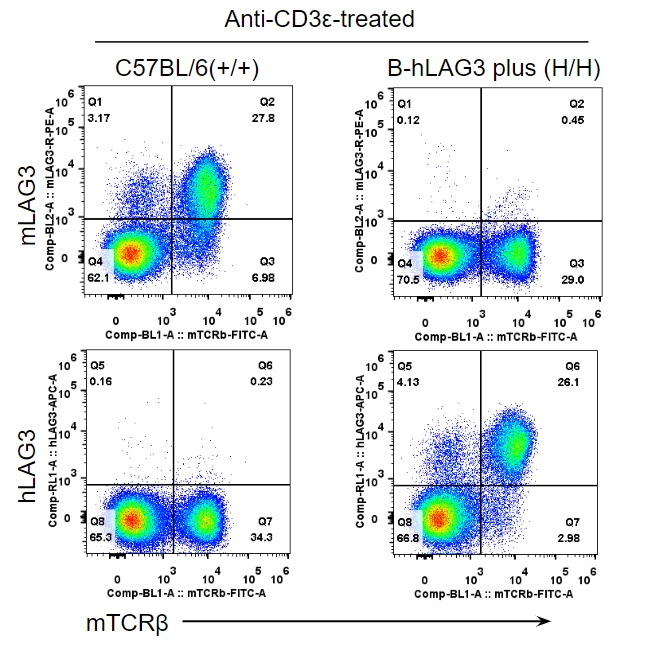
Strain specific LAG3 expression analysis in homozygous B-hLAG3 mice plus by flow cytometry. Splenocytes were collected from WT and homozygous B-hLAG3 mice plus stimulated with anti-CD3ε in vivo, and analyzed by flow cytometry with species-specific anti-LAG3 antibody. Mouse LAG3 was detectable in WT. Human LAG3 was exclusively detectable in homozygous B-hLAG3 mice plus but not WT mice.
-
Analysis of spleen leukocytes cell subpopulations in B-hLAG3 mice plus

-
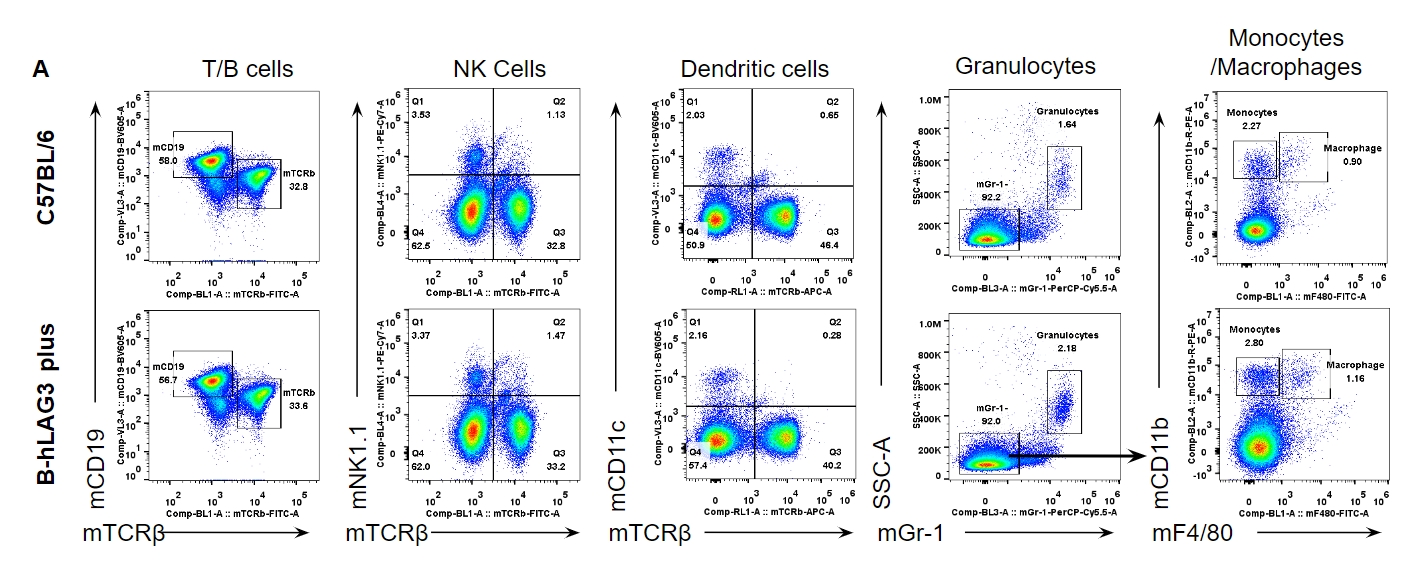
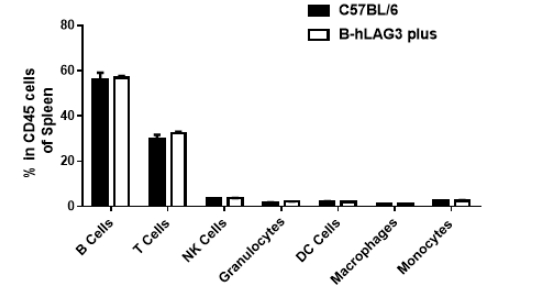 Analysis of spleen leukocyte subpopulations by FACS
Analysis of spleen leukocyte subpopulations by FACSSplenocytes were isolated from female C57BL/6 and B-hLAG3 mice plus (n=3, 6 week-old) Flow cytometry analysis of the splenocytes was performed to assess leukocyte subpopulations. A. Representative FACS plots. Single live cells were gated for CD45 population and used for further analysis as indicated here. B. Results of FACS analysis. Percent of T, B, NK, Monocyte, DC and macrophage cells in homozygous B-hLAG3 mice plus were similar to those in the C57BL/6 mice, demonstrating that introduction of hLAG3 in place of its mouse counterpart does not change the overall development, differentiation or distribution of these cell types in spleen.
-
Analysis of spleen T cell subpopulations in B-hLAG3 mice

-
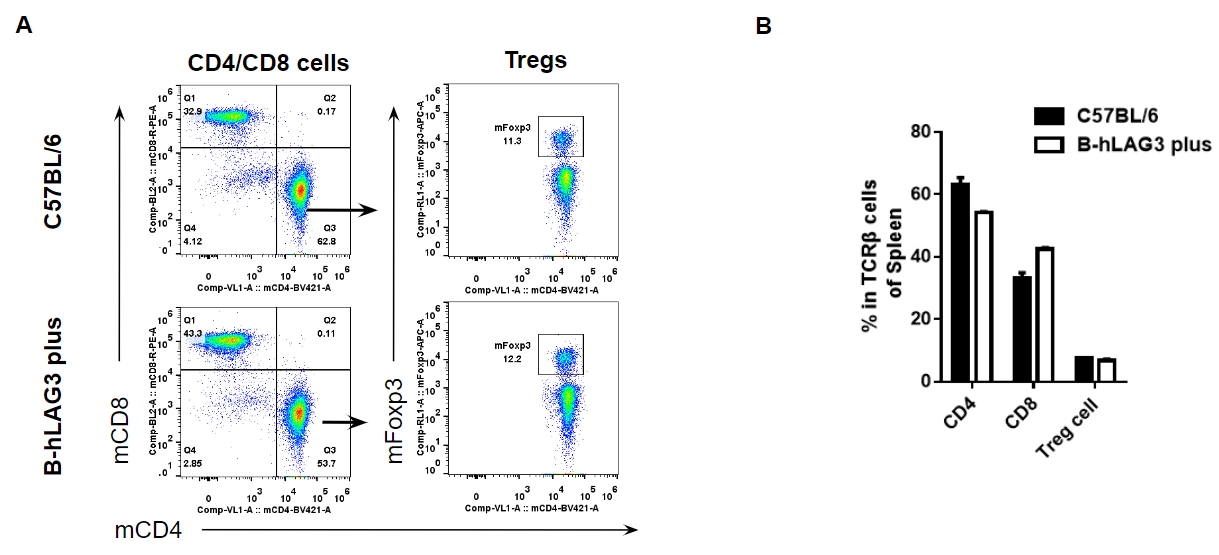
Analysis of spleen T cell subpopulations by FACS
Splenocytes were isolated from female C57BL/6 and B-hLAG3 mice plus (n=3, 6 week-old). Flow cytometry analysis of the splenocytes was performed to assess leukocyte subpopulations. A. Representative FACS plots. Single live CD45+ cells were gated for CD3 T cell population and used for further analysis as indicated here. B. Results of FACS analysis. Percent of CD8, CD4, and Treg cells in homozygous B-hLAG3 mice plus were similar to those in the C57BL/6 mice, demonstrating that introduction of hLAG3 in place of its mouse counterpart does not change the overall development, differentiation or distribution of these T cell sub types in spleen. Values are expressed as mean ± SEM.
-
Analysis of blood leukocytes cell subpopulations in B-hLAG3 mice plus

-

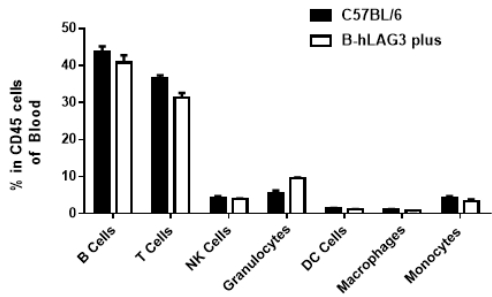 Analysis of blood leukocyte subpopulations by FACS
Analysis of blood leukocyte subpopulations by FACSBlood were isolated from female C57BL/6 and B-hLAG3 mice plus (n=3, 6 week-old). Flow cytometry analysis of the blood was performed to assess leukocyte subpopulations. A. Representative FACS plots. Single live cells were gated for CD45 population and used for further analysis as indicated here. B. Results of FACS analysis. Percent of T, B, NK, Monocyte, DC and macrophage cells in homozygous B-hLAG3 mice plus were similar to those in the C57BL/6 mice, demonstrating that introduction of hLAG3 in place of its mouse counterpart does not change the overall development, differentiation or distribution of these cell types in blood.
-
Analysis of blood T cell subpopulations in B-hLAG3 mice plus

-
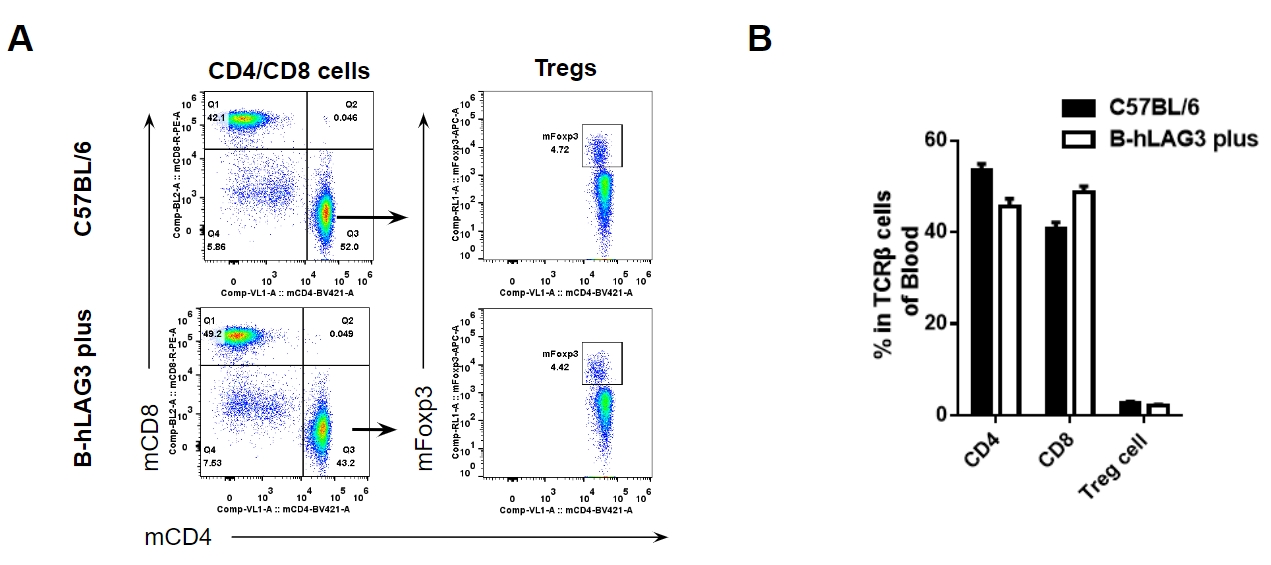
Analysis of spleen T cell subpopulations by FACS
Splenocytes were isolated from female C57BL/6 and B-hLAG3 mice plus (n=3, 6 week-old). Flow cytometry analysis of the splenocytes was performed to assess leukocyte subpopulations. A. Representative FACS plots. Single live CD45+ cells were gated for CD3 T cell population and used for further analysis as indicated here. B. Results of FACS analysis. Percent of CD8, CD4, and Treg cells in homozygous B-hLAG3 mice plus were similar to those in the C57BL/6 mice, demonstrating that introduction of hLAG3 in place of its mouse counterpart does not change the overall development, differentiation or distribution of these T cell sub types in spleen. Values are expressed as mean ± SEM.
-
Antibody binding assay

-

Splenocytes from homozygous B-hLAG3 plus were analyzed by flow cytometry. Splenocytes were collected from WT and homozygous B-hLAG3 (H/H) mice plus stimulated with anti-CD3ε in vivo, activated T cells in homozygous B-hLAG3 mice plus can bind well to anti-hLAG3 antibody (relatlimab, in house).

Splenocytes from homozygous B-hLAG3 plus were analyzed by flow cytometry.
Splenocytes were collected from WT and homozygous B-hLAG3 (H/H) mice plus stimulated with anti-CD3ε in vivo, activated T cells in homozygous B-hLAG3 mice plus can bind well to recombinant human FGL-1(c-mFc) protein.
-
In vivo efficacy of relatlimab (in house)

-
In vivo efficacy of relatlimab (in house)
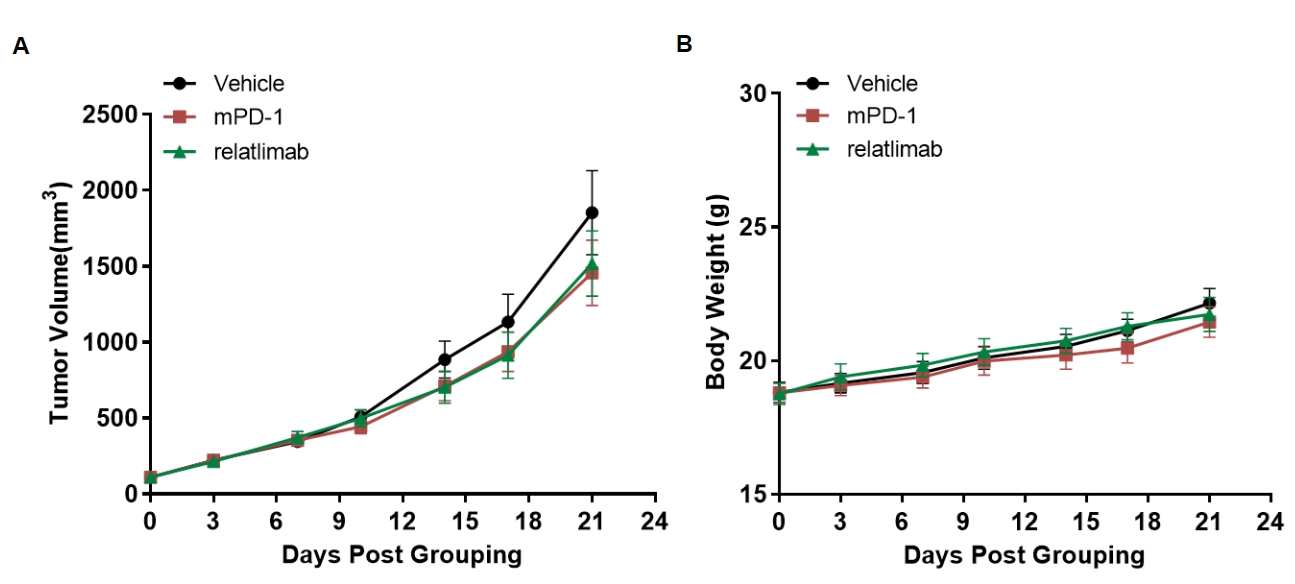
Antitumor activity of anti-human LAG3 antibody in B-hLAG3 mice plus. (A) Anti-human LAG3 antibodies inhibited MC38 tumor growth in B-hLAG3 mice plus. Murine colon cancer MC38 cells were subcutaneously implanted into homozygous B-hLAG3 mice plus (female, 6-7 week-old, n=8). Mice were grouped when tumor volume reached approximately 100 mm3, at which time they were treated with relatlimab (in house) with doses and schedules indicated in panel A. (B) Body weight changes during treatment. As shown in panel A, relatlimab (in house) was efficacious in controlling tumor growth in B-hLAG3 mice plus, demonstrating that the B-hLAG3 mice plus provide a powerful preclinical model for in vivo evaluation of anti-human LAG3 antibodies. Values are expressed as mean ± SEM.


